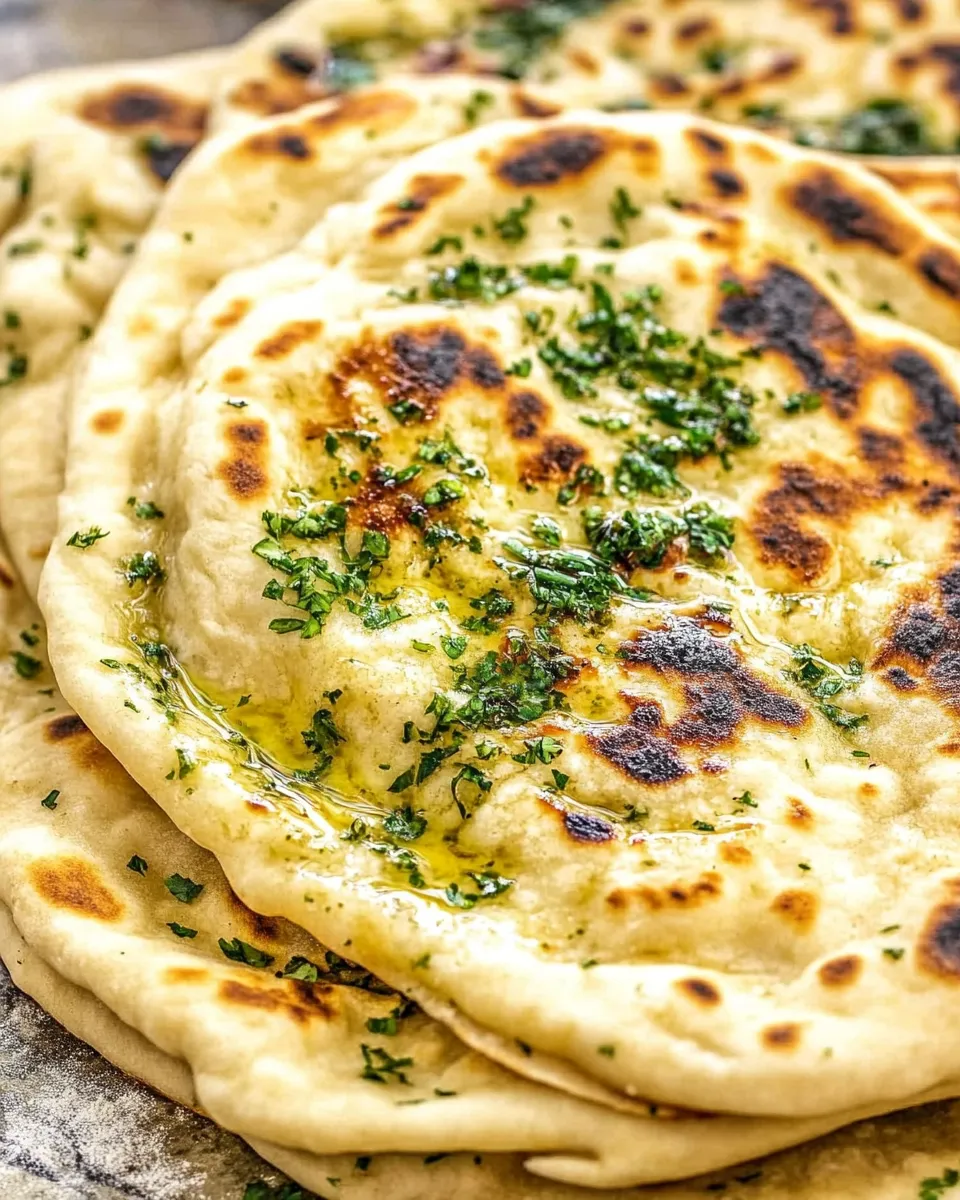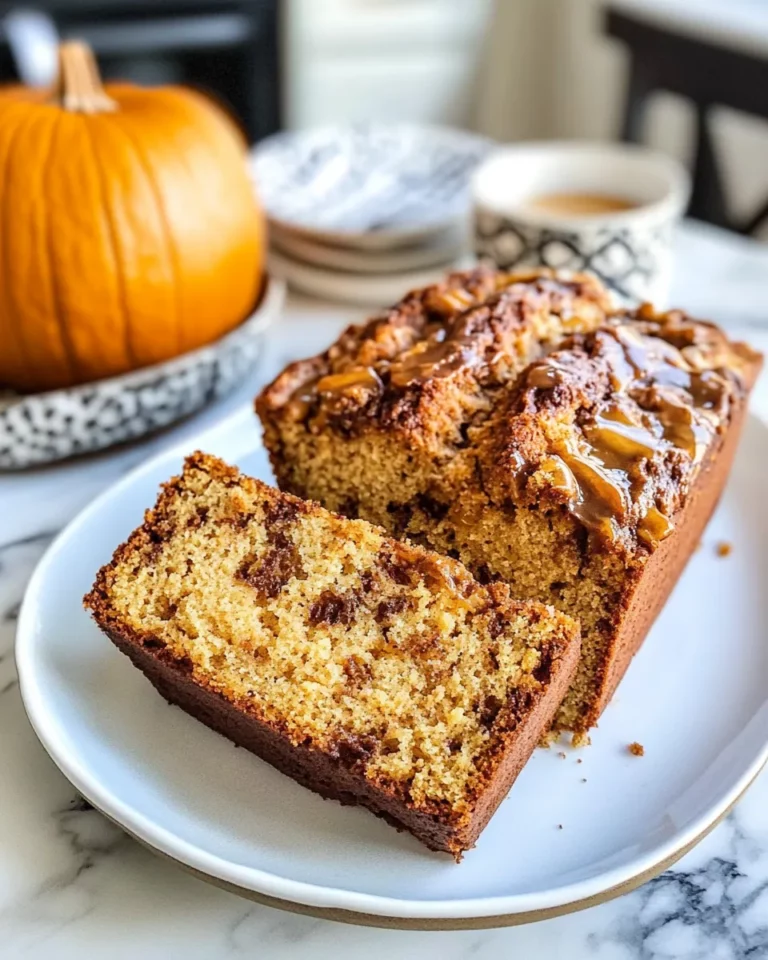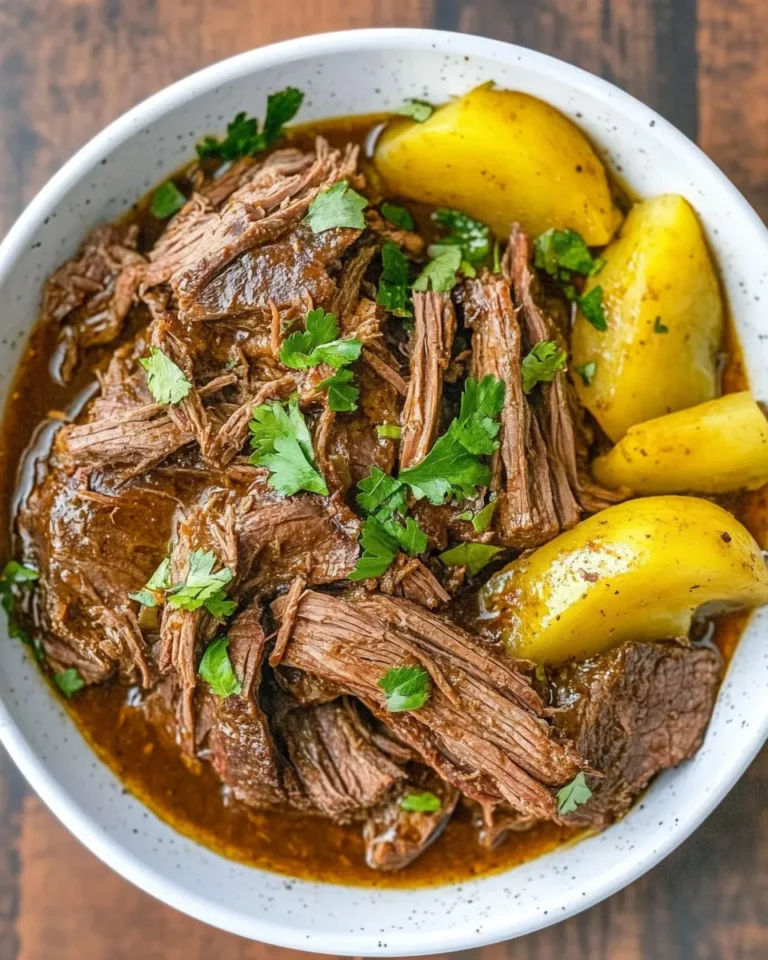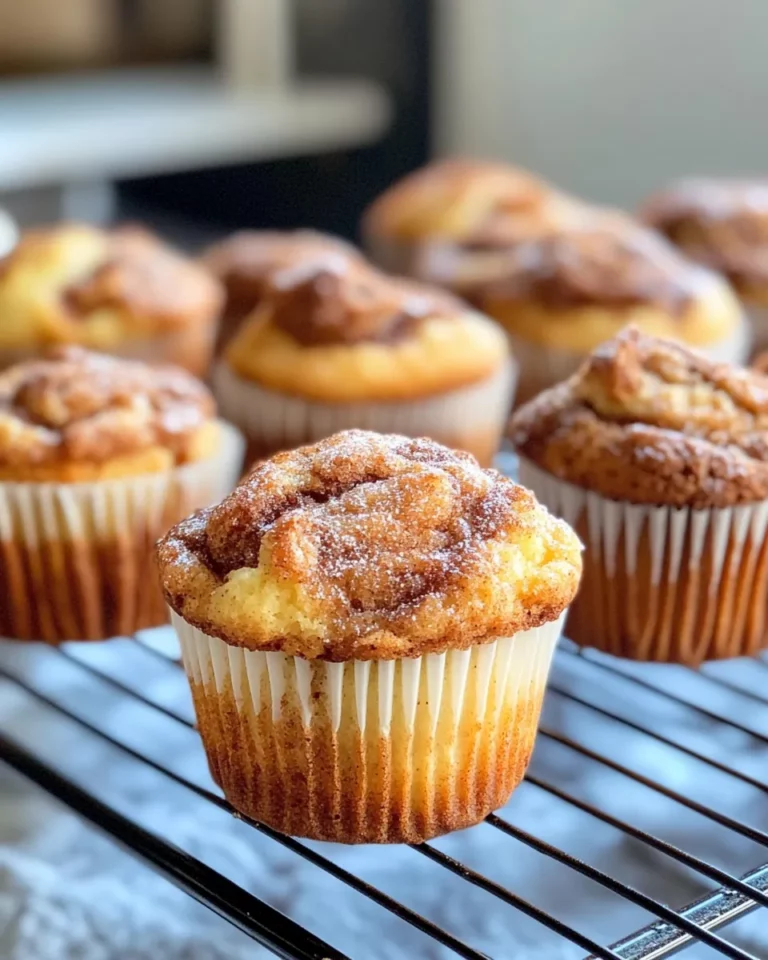Naan Bread Recipe
Naan bread is a beloved staple in many kitchens around the world, cherished for its soft, pillowy texture and slightly crispy edges. Whether you’re pairing it with a flavorful curry, using it as a wrap, or enjoying it simply with some butter, homemade naan elevates any meal. The best part? You can make this delicious bread right in your own kitchen with just a handful of simple ingredients. This recipe combines the tang of yogurt with the richness of melted butter, resulting in naan that’s tender and flavorful every time. Ready to roll up your sleeves and bake some irresistible naan? Let’s dive in!
Why This Recipe Is a Must-Try
This naan bread recipe stands out because it strikes the perfect balance between simplicity and flavor. The use of plain yogurt not only adds a slight tang but also makes the dough incredibly soft and easy to work with. Unlike traditional recipes that require long fermentation times, this one is quicker but still delivers that authentic texture and taste you crave. Whether you’re an experienced baker or a beginner, this recipe is approachable and yields consistent results. Plus, it’s made with everyday pantry staples, so you don’t need to hunt down exotic ingredients. The melted butter brushed on top adds that classic, buttery finish that makes naan so addictive. You’ll love how versatile and irresistible this bread turns out!
Ingredients
- 4 cups (480 g) bread flour or all-purpose flour – provides structure and chewiness
- 1 teaspoon granulated sugar – activates the yeast
- 1 teaspoon salt – enhances flavor
- 2¼ teaspoons active dry yeast – the magic that makes the dough rise
- 1 ½ cups (360 g) plain yogurt at room temperature – adds moisture and tang
- ¼ cup (60 g) unsalted butter, melted – enriching and for brushing
- 1-2 tablespoons lukewarm water (adjust as needed) – helps bring the dough together
How To Make Naan Bread Recipe
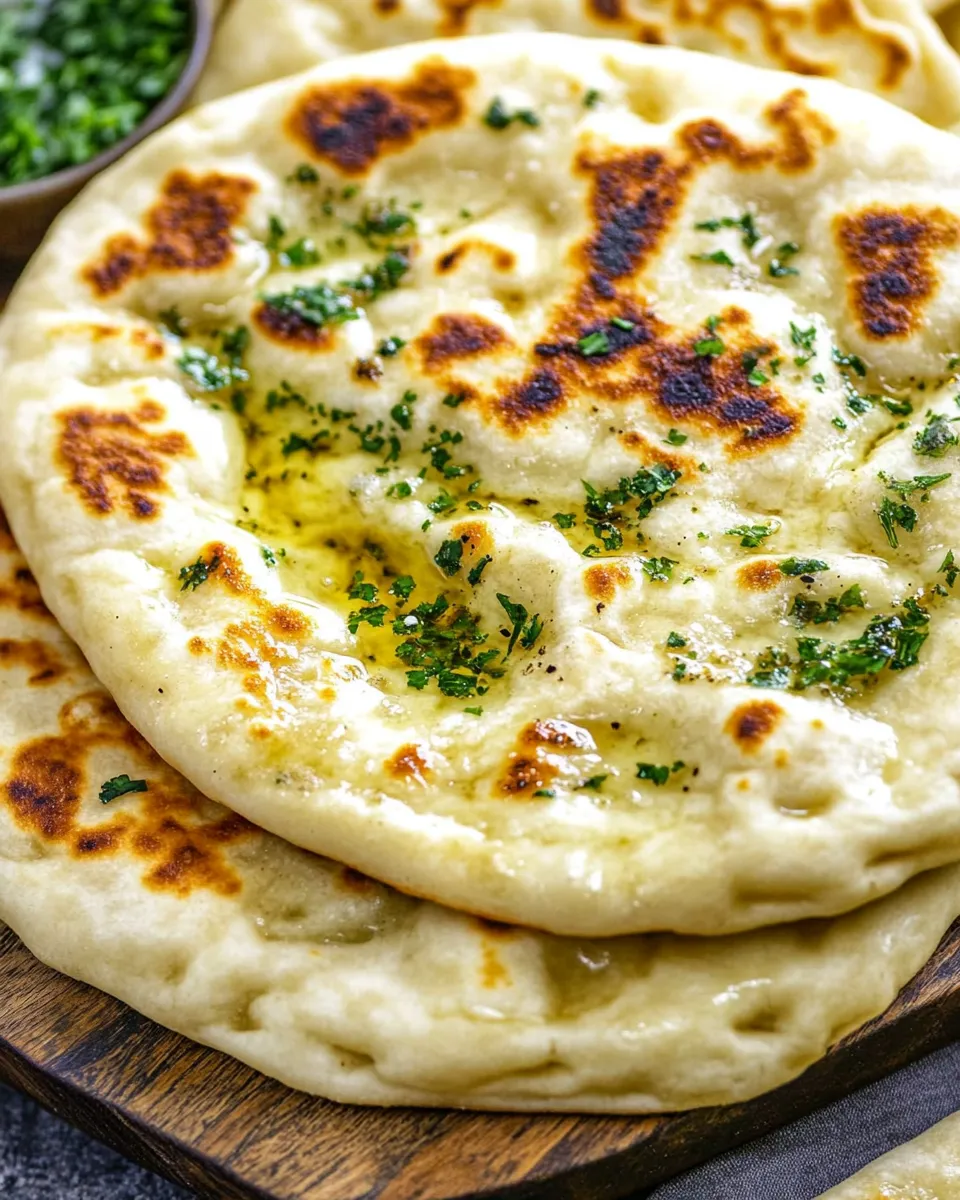
Step 1: Activate the Yeast
In a small bowl, combine the active dry yeast, sugar, and 1 tablespoon of lukewarm water. Stir gently and let it sit for about 5 to 10 minutes, or until it becomes frothy and bubbly. This indicates that your yeast is active and ready to work its magic.
Step 2: Mix the Dry Ingredients
In a large mixing bowl, whisk together the flour and salt until evenly combined. This ensures your salt doesn’t interfere with the yeast’s activity and is evenly distributed throughout the dough.
Step 3: Combine Wet Ingredients
Add the room temperature plain yogurt and the melted butter to the activated yeast mixture. Stir to combine well. The yogurt helps tenderize the dough, while the butter adds richness and flavor.
Step 4: Form the Dough
Pour the wet mixture into the bowl with the dry ingredients. Using a wooden spoon or your hands, mix until a shaggy dough begins to form. If the dough feels too dry or crumbly, add the remaining tablespoon of lukewarm water gradually, a little at a time, until the dough comes together softly but is not sticky.
Step 5: Knead the Dough
Transfer the dough to a lightly floured surface and knead for about 8 to 10 minutes. The goal is to develop gluten, which gives naan its characteristic chewiness. The dough should be smooth, elastic, and slightly tacky but not sticky.
Step 6: Let the Dough Rise
Place the dough in a lightly greased bowl, cover it with a clean kitchen towel or plastic wrap, and let it rise in a warm spot for about 1 to 1.5 hours, or until it has doubled in size.
Step 7: Divide and Shape the Dough
Once risen, punch down the dough gently to release any air bubbles. Divide it into 8 equal portions and shape each into a ball. Let the balls rest for 10 minutes to relax the gluten, making them easier to roll out.
Step 8: Roll Out the Naan
On a floured surface, roll each dough ball into an oval or teardrop shape, about ¼-inch thick. Don’t worry about perfect shapes; the rustic look adds to their charm.
Step 9: Cook the Naan
Heat a cast-iron skillet or heavy-bottomed pan over medium-high heat. Once hot, place one piece of rolled dough onto the skillet. Cook for about 1-2 minutes until bubbles form on the surface, then flip and cook the other side for another 1-2 minutes. You’re looking for golden brown spots and slight charring. Repeat with the remaining dough.
Step 10: Brush with Butter
Immediately after cooking each naan, brush generously with melted butter. This adds flavor and keeps the bread soft and moist.
Expert Tips
- Use bread flour for chewier naan, but all-purpose flour works perfectly well if that’s what you have on hand.
- Make sure your yogurt is at room temperature to help activate the yeast and create a soft dough.
- If your dough is too sticky, add flour gradually; if it’s too dry, add a teaspoon of water at a time.
- Don’t skip the resting period after dividing the dough to make rolling easier and the texture better.
- For a crispier naan, cook a little longer on each side, but beware of burning.
- Use a cast-iron skillet or heavy pan for best results as it retains heat evenly.
- Brush with garlic butter or sprinkle with herbs like cilantro or nigella seeds for extra flavor.
Variations and Customizations
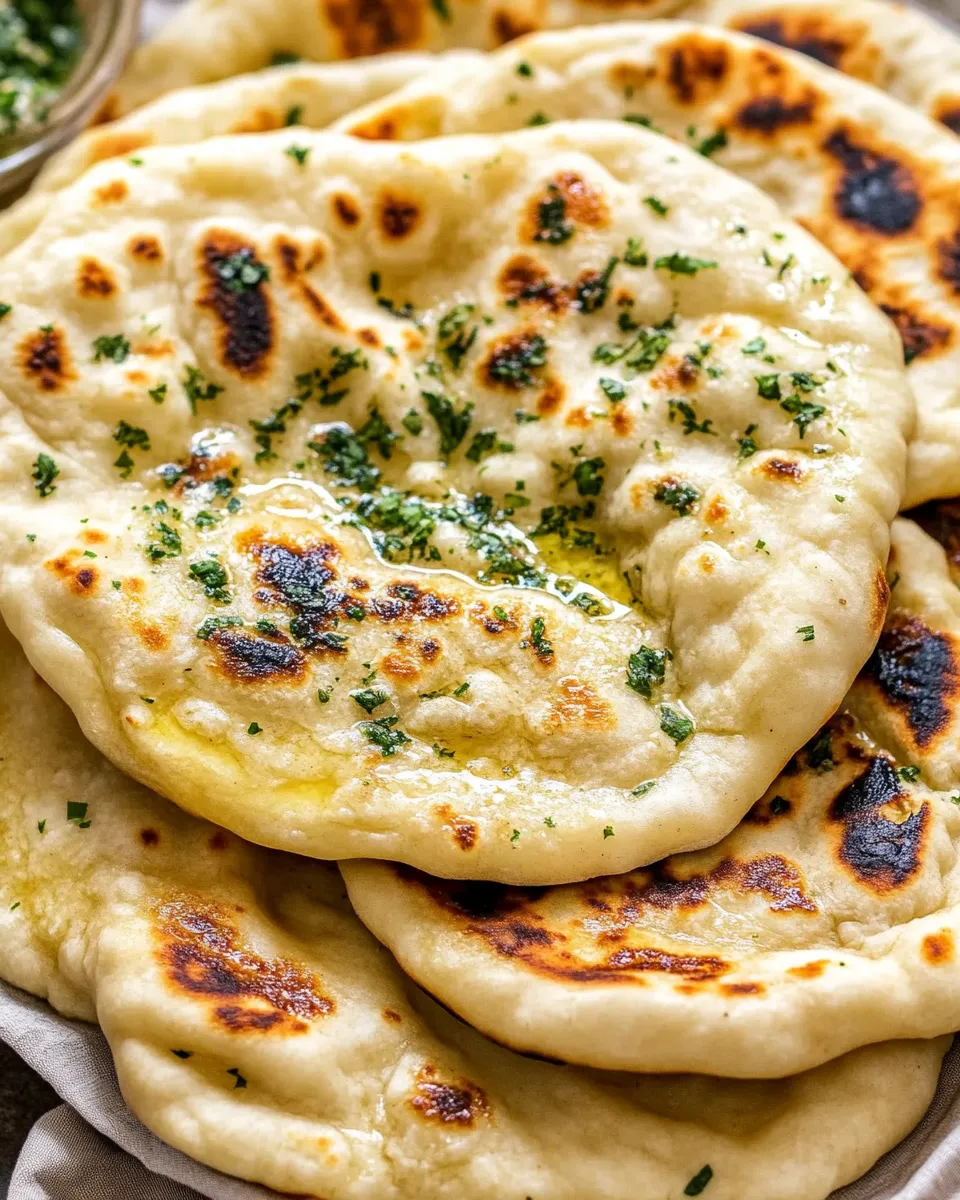
- Garlic Naan: Add 2-3 cloves of minced garlic to the melted butter before brushing onto the naan.
- Cheese Naan: Stuff the rolled dough with shredded mozzarella or paneer before cooking.
- Herb Naan: Mix fresh chopped cilantro, mint, or parsley into the dough or sprinkle on top before cooking.
- Whole Wheat Naan: Substitute half of the flour with whole wheat flour for a nuttier flavor and a bit more fiber.
- Spiced Naan: Add ground cumin, coriander, or chili flakes to the dough for a subtle spice kick.
- Sweet Naan: Brush with honey or sprinkle with cinnamon sugar after cooking for a dessert twist.
How to Store Leftovers
To keep your naan fresh, allow the bread to cool completely on a wire rack. Store them in an airtight container or zip-top bag at room temperature for up to 2 days. For longer storage, wrap the naan individually in plastic wrap or foil and freeze for up to 2 months. To reheat, warm them in a skillet over medium heat or in the oven wrapped in foil to revive their softness and flavor. Avoid microwaving as it tends to make the bread chewy or rubbery.
FAQ
Can I use instant yeast instead of active dry yeast?
Yes! You can substitute instant yeast for active dry yeast using the same quantity (2¼ teaspoons). Since instant yeast activates faster, you can mix it directly with the flour instead of activating it in water first. You may also find the rising time slightly shorter.
What can I do if my dough is too sticky or too dry?
If the dough feels too sticky and hard to handle, sprinkle a little flour onto your work surface and knead it in gradually until manageable. If the dough is too dry or crumbly, add lukewarm water one teaspoon at a time until it comes together smoothly.
Do I need a tandoor or special oven to make naan?
Not at all! While traditional naan is cooked in a tandoor, this recipe is designed for home kitchens using a cast-iron skillet or heavy pan. Cooking on a hot skillet mimics the high heat and gives you delicious, authentic-tasting naan.
Can I make this recipe dairy-free or vegan?
You can substitute the plain yogurt with a dairy-free alternative such as coconut or almond yogurt (unsweetened and plain). Use vegan butter or olive oil in place of melted butter. Keep in mind that slight changes in texture and flavor may occur, but the naan will still turn out tasty.
Conclusion
Making naan bread at home is simpler than you might think, and this recipe delivers soft, fluffy, and flavorful results every time. With just a few basic ingredients and some simple steps, you can enjoy fresh naan that’s perfect for dipping, wrapping, or accompanying your favorite dishes. Whether you stick to the classic version or try one of the exciting variations, your homemade naan will quickly become a kitchen favorite. Gather your ingredients, warm up your skillet, and treat yourself to this delicious bread that’s sure to impress family and friends alike!
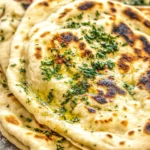
Naan Bread Recipe
Ingredients
- 4 cups bread flour or all-purpose flour provides structure and chewiness
- 1 teaspoon granulated sugar activates the yeast
- 1 teaspoon salt enhances flavor
- 2¼ teaspoons active dry yeast the magic that makes the dough rise
- 1 ½ cups plain yogurt at room temperature, adds moisture and tang
- ¼ cup unsalted butter melted, enriching and for brushing
- 1-2 tablespoons lukewarm water adjust as needed, helps bring the dough together
Instructions
- In a small bowl, combine the active dry yeast, sugar, and 1 tablespoon of lukewarm water. Stir gently and let it sit for about 5 to 10 minutes, or until it becomes frothy and bubbly.
- In a large mixing bowl, whisk together the flour and salt until evenly combined.
- Add the room temperature plain yogurt and the melted butter to the activated yeast mixture. Stir to combine well.
- Pour the wet mixture into the bowl with the dry ingredients. Using a wooden spoon or your hands, mix until a shaggy dough begins to form. If the dough feels too dry or crumbly, add the remaining tablespoon of lukewarm water gradually until the dough comes together softly but is not sticky.
- Transfer the dough to a lightly floured surface and knead for about 8 to 10 minutes until smooth, elastic, and slightly tacky but not sticky.
- Place the dough in a lightly greased bowl, cover it with a clean kitchen towel or plastic wrap, and let it rise in a warm spot for about 1 to 1.5 hours, or until doubled in size.
- Once risen, punch down the dough gently to release air bubbles. Divide it into 8 equal portions and shape each into a ball. Let the balls rest for 10 minutes.
- On a floured surface, roll each dough ball into an oval or teardrop shape about ¼-inch thick.
- Heat a cast-iron skillet or heavy-bottomed pan over medium-high heat. Cook each piece of rolled dough for 1-2 minutes on each side until golden brown spots and slight charring appear.
- Immediately after cooking each naan, brush generously with melted butter to add flavor and keep the bread soft and moist.
Equipment
- Small Bowl
- Large Mixing Bowl
- Wooden Spoon
- Cast-Iron Skillet
- Floured Surface
- Kitchen Towel or Plastic Wrap

